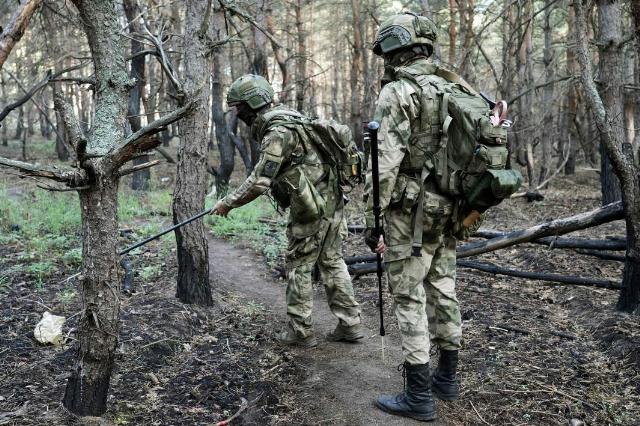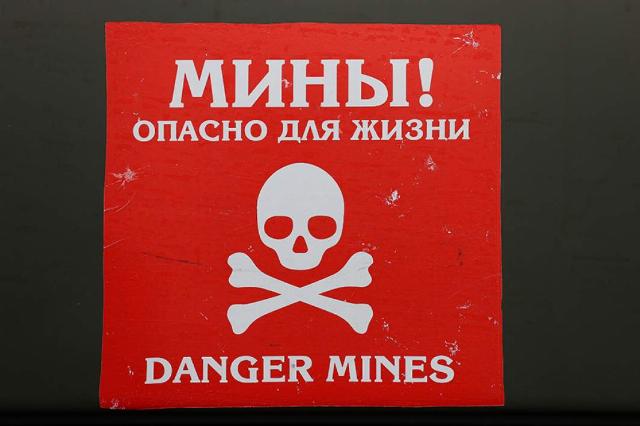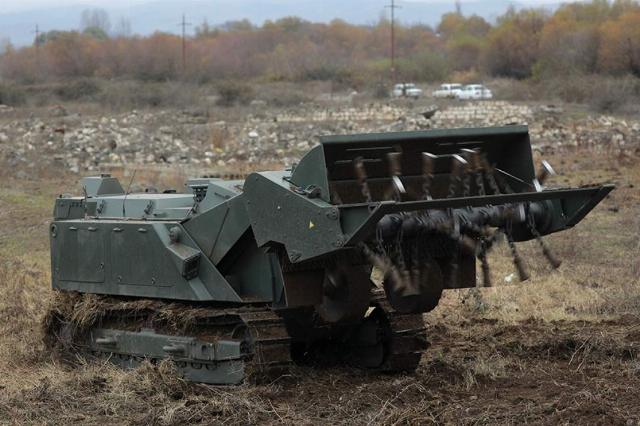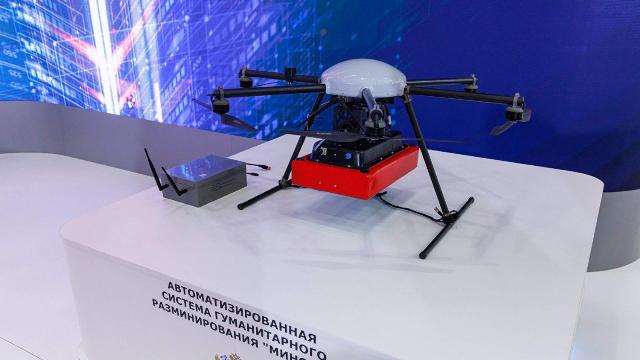The Minskan drone scans the area with GPR and processes the result using a neural network
Russian sappers will have maps of minefields created using a neural network. This became possible thanks to the Minskan humanitarian demining system. It is based on a mid-range drone with ground-penetrating radar. It detects explosive objects eight times faster than foot sappers would do. How this system will facilitate the work of our military and what are its advantages — in the material of Izvestia.
How the new Minskan mine clearance system will work
Specialists of Bauman Moscow State Technical University have created an automated humanitarian demining system "Minskan". It will help to clear the territory of dangerous finds after the end of hostilities. The system is based on an unmanned hexacopter of the middle class with ground—penetrating radar, a representative of the university told Izvestia.
"After any armed confrontation ends, the fields remain littered with mines,— he explained. — And those who planted these mines have already forgotten where they are. Then this drone rises into the sky, flies over the field at a low altitude and looks for mines. The ground-penetrating radar scans what is under it. Based on the data obtained, the neural network processes the results and builds a map of where and at what depth the mines are located.

Sappers of the 116th separate special purpose brigade of the Russian Guard in the area of a special military operation
Image source: Photo: RIA Novosti/Maria Marikyan
The device can scan large spaces. Per unit of working time, it covers an area eight times larger than an ordinary sapper can do. And most importantly, this method of search excludes human participation, so that specialists are not at risk once again.
— You open the laptop, set a flight task, the device takes off and explores a certain area. A person with a remote control secures the process, but in general, the drone copes with the task on its own. The GPR can operate at temperatures from minus 40 to plus 40 degrees. The drone flies with a crosswind of up to 15 m/s. The system has already been developed and tested," explained the representative of the Bauman Moscow State Technical University.
The drone's operating time is 40 minutes, its diameter is one and a half meters.
How will Minskan help Russian sappers
During the fighting, the enemy is constantly making attempts to remotely mine the territory under our control and not only, military expert Yuri Lyamin explained to Izvestia.

Photo: TASS/Alexander Reka
Image source: iz.ru
— Remote systems are being used by the Armed Forces of Ukraine, so our military is constantly working on mine clearance, — he noted. — This helps them to move forward gradually, while maintaining the possibility of full-fledged supplies, and also gives the civilian population the opportunity to return to their homes. The idea developed by the specialists of Bauman Moscow State Technical University is interesting, but we need to see in practice how effective it will be.
According to the expert, when using Minskan, it may be necessary to work in conjunction.
— That is, with these drones we conduct an initial check — we find the most obvious, visible and dangerous places. This will greatly speed up the work for our sappers, as well as reduce the risk to their lives. Russian developers have already created robotic platforms for humanitarian demining, but people are also involved in their work. I hope the developers of this drone will refine it based on the experience gained, in which case it will be able to become an indispensable assistant for the Russian military.
Work on the creation of robotic complexes related to mine clearance has been underway for quite a long time, military expert Alexei Leonkov noted in a conversation with Izvestia.

Multifunctional robotic mine clearance complex "Uran-6"
Image source: Photo: TASS/Alexander Ryumin
— There are quite well-known systems that have already proven themselves, for example, Uran—6, which de-mines entire lanes and replaces the work of 30 sappers within an hour, - he recalled. — The enemy places a variety of mines, including non-removable, non-bogged, booby traps, which are quite difficult for a sapper to detect. And even if he finds them, then mine clearance is associated with a great risk to life. And if there is a preliminary sapper reconnaissance and if geolocation allows you to identify all types of mines, then this will greatly facilitate the work of the sapper. Here he will already be able to make a decision where he will deal with mine clearance himself, and where he will involve robotic complexes.
Earlier, Izvestia wrote that private business would participate in clearing mines and shells from the territory of new regions of Russia.
— As Yevgeny Primakov said at the time, it is impossible to build peace on mined land, — said Eduard Taran, President of RATM Holding, in an interview with Izvestia. — We are aware of the importance of restoring peaceful life in the territories affected by the conflict as soon as possible. The implementation of this initiative will allow the state to solve important socio-economic problems in the new regions.
At the International Mine Action Center of the Armed Forces of the Russian Federation, more than 50 people were trained under the program "Humanitarian Demining Specialist".
Roman Kretsul
Julia Leonova
Andrey Fedorov

